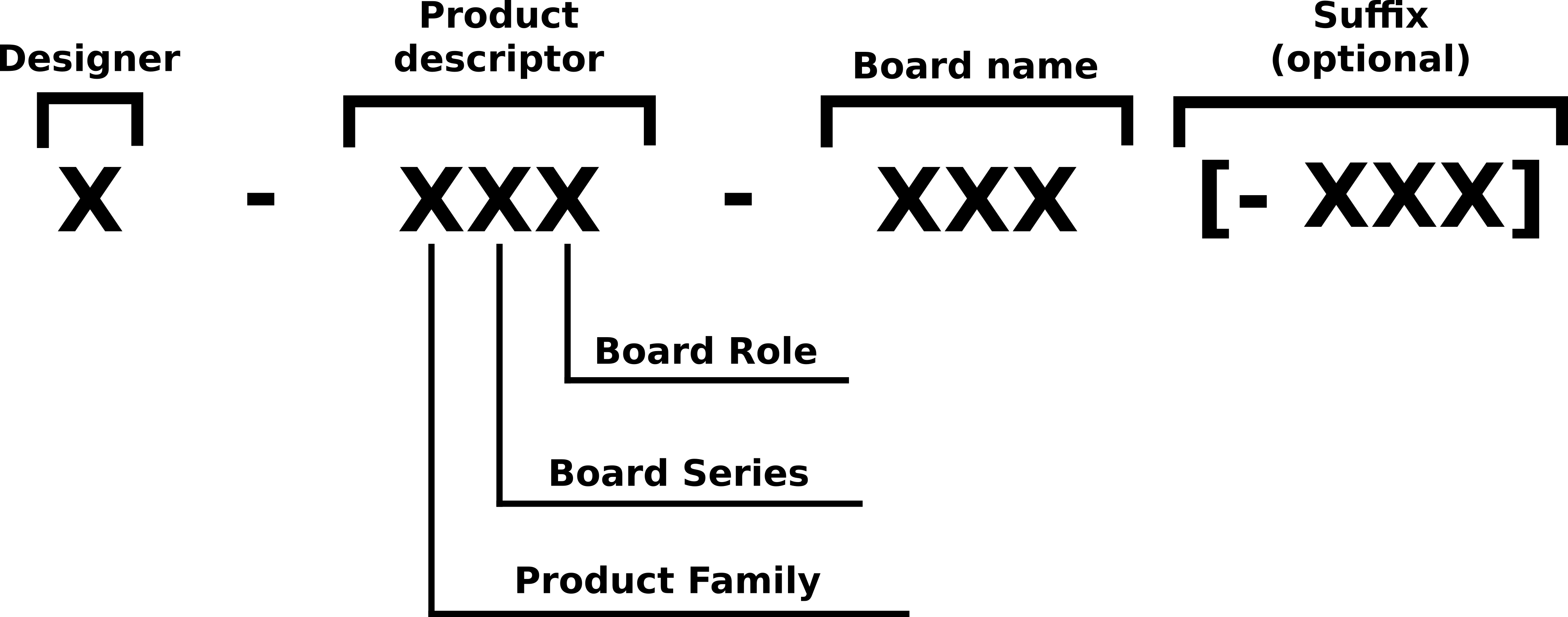HotRIO Hardware Naming Convention
This page provides both users and developers with a clear understanding of the naming convention used within the HotRIO hardware ecosystem. The purpose of this nomenclature is to systematically identify and categorize the available hardware, making it easier to reference, catalogue, and communicate about specific devices across technical and operational contexts.
While most boards in the HotRIO family are commonly referred to by their codenames, which are designed to be easy to pronounce and remember (e.g., Piranha, Viper, Macaco), these informal names are intended primarily for internal use and day-to-day discussion. The development team often adopts animal-themed names to bring a touch of personality and clarity to technical conversations.
However, although convenient for dialogue, these informal names are not suitable for official documentation, marketing, or procurement, where precision and clarity are essential. To prevent confusion with similarly named products in other industries or brands, each piece of HotRIO hardware is also assigned a technical identifier following a well-defined convention.
This document outlines that formal naming structure.
Nomenclature Format
The technical identifier used for HotRIO boards is structured into three main blocks and an optional fourth block, all separated by dashes (-). This format allows for systematic categorization of the hardware, with specificity increasing from left to right.

Each block conveys essential information about the product, from the designer to the specific hardware variant.
First Block: Designer Code
This block consists of a single uppercase letter, identifying the designer of the hardware. Each organization or entity that contributes designs to the HotRIO ecosystem is assigned a unique code in this position. This allows users to easily recognize the origin of a board.
Example:
Ffor Fusion for Energy
Second Block: Product Classification Code
This block always consists of three uppercase letters, each representing a different classification aspect:
First Letter – Product Family Indicates the general product family. In the current scope, most products belong to the HotRIO family, and are therefore marked with:
H: HotRIO
Second Letter – Product Series Represents the series to which the product belongs. A series is a group of products that are designed to interoperate seamlessly at the hardware level. Products within the same series can be interconnected directly. Interaction between different series is possible, but typically requires additional components (e.g., PCs or gateway boards). Examples include:
E: Eurocard seriesS: Standalone seriesC: CompactRIO-compatible series
Third Letter – Product Role Describes the functional role of the hardware within the HotRIO ecosystem. This character allows users to quickly understand the intended usage of the board. Examples include:
C: Controller board (coordinates I/O boards, sends/receives messages)E: Expansion board (provides input/output functionality)A: Aggregator board (such as backplanes)T: Tooling/debug board (development-specific or test tools)
Third Block: Product Identifier
This block is composed of three or more alphanumeric characters, typically forming an abbreviation or contraction of the board’s codename. These identifiers are designed to be memorable and intuitive, reflecting the name used informally by the development team.
Examples: -
DIO: Digital I/O board -FIO: Fiber I/O board -VIP: Viper -IPA: IpanemaFourth Block (Optional): Variant Suffix
The fourth block is optional and used to specify a variant or version of the board. It may contain letters, numbers, or a combination of both. This block adds extra detail when the third block alone is insufficient to differentiate between variants of the same base product.
For example, a board identified as
F-HEE-DIOmay have multiple variants that support different voltage ranges or numbers of I/O channels. A suffix such as-24V-8IOor-LVTTL-16IOcould indicate the specific version.This block is entirely board-dependent and serves to summarize critical technical differences in a concise way.
Reading the Name
The nomenclature is read from left to right, with each block progressively narrowing down the identity of the hardware:
The first and second blocks provide context about the board’s origin, family, series, and role.
The third block identifies the specific hardware.
The optional fourth block clarifies its variant or version.
Together, this structure enables both new users and experienced developers to navigate the product catalog effectively, whether for documentation, procurement, or system integration.